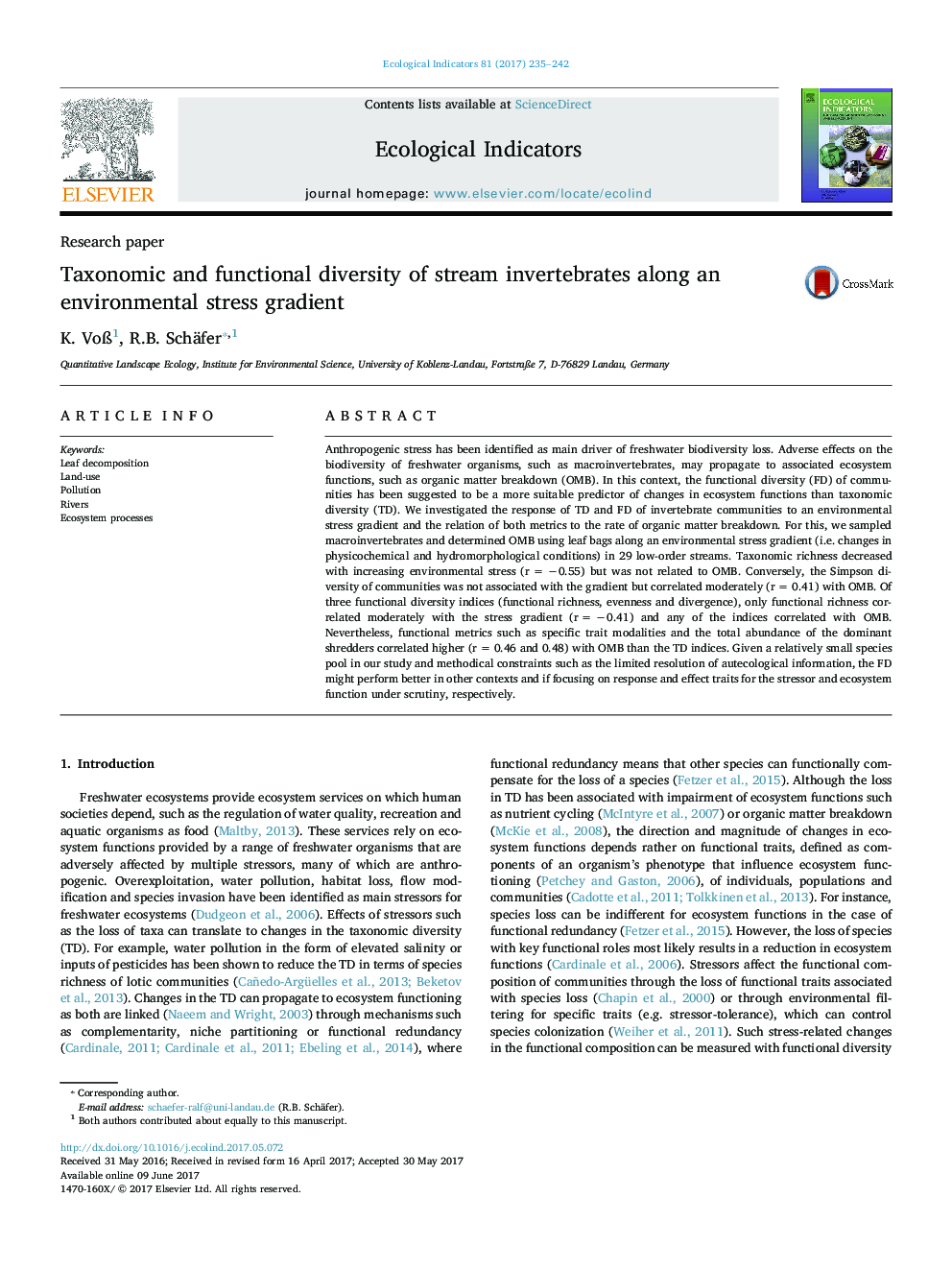| کد مقاله | کد نشریه | سال انتشار | مقاله انگلیسی | نسخه تمام متن |
|---|---|---|---|---|
| 5741427 | 1617121 | 2017 | 8 صفحه PDF | دانلود رایگان |
- Measured environmental stress and organic matter breakdown in 29 streams.
- Relationship of taxonomic and functional diversity with stress and breakdown.
- Taxon richness and functional richness correlated with stress gradient.
- Functional diversity indices not correlated with breakdown.
- Simpson diversity and other functional metrics correlated with breakdown.
Anthropogenic stress has been identified as main driver of freshwater biodiversity loss. Adverse effects on the biodiversity of freshwater organisms, such as macroinvertebrates, may propagate to associated ecosystem functions, such as organic matter breakdown (OMB). In this context, the functional diversity (FD) of communities has been suggested to be a more suitable predictor of changes in ecosystem functions than taxonomic diversity (TD). We investigated the response of TD and FD of invertebrate communities to an environmental stress gradient and the relation of both metrics to the rate of organic matter breakdown. For this, we sampled macroinvertebrates and determined OMB using leaf bags along an environmental stress gradient (i.e. changes in physicochemical and hydromorphological conditions) in 29 low-order streams. Taxonomic richness decreased with increasing environmental stress (r = â0.55) but was not related to OMB. Conversely, the Simpson diversity of communities was not associated with the gradient but correlated moderately (r = 0.41) with OMB. Of three functional diversity indices (functional richness, evenness and divergence), only functional richness correlated moderately with the stress gradient (r = â0.41) and any of the indices correlated with OMB. Nevertheless, functional metrics such as specific trait modalities and the total abundance of the dominant shredders correlated higher (r = 0.46 and 0.48) with OMB than the TD indices. Given a relatively small species pool in our study and methodical constraints such as the limited resolution of autecological information, the FD might perform better in other contexts and if focusing on response and effect traits for the stressor and ecosystem function under scrutiny, respectively.
Journal: Ecological Indicators - Volume 81, October 2017, Pages 235-242
